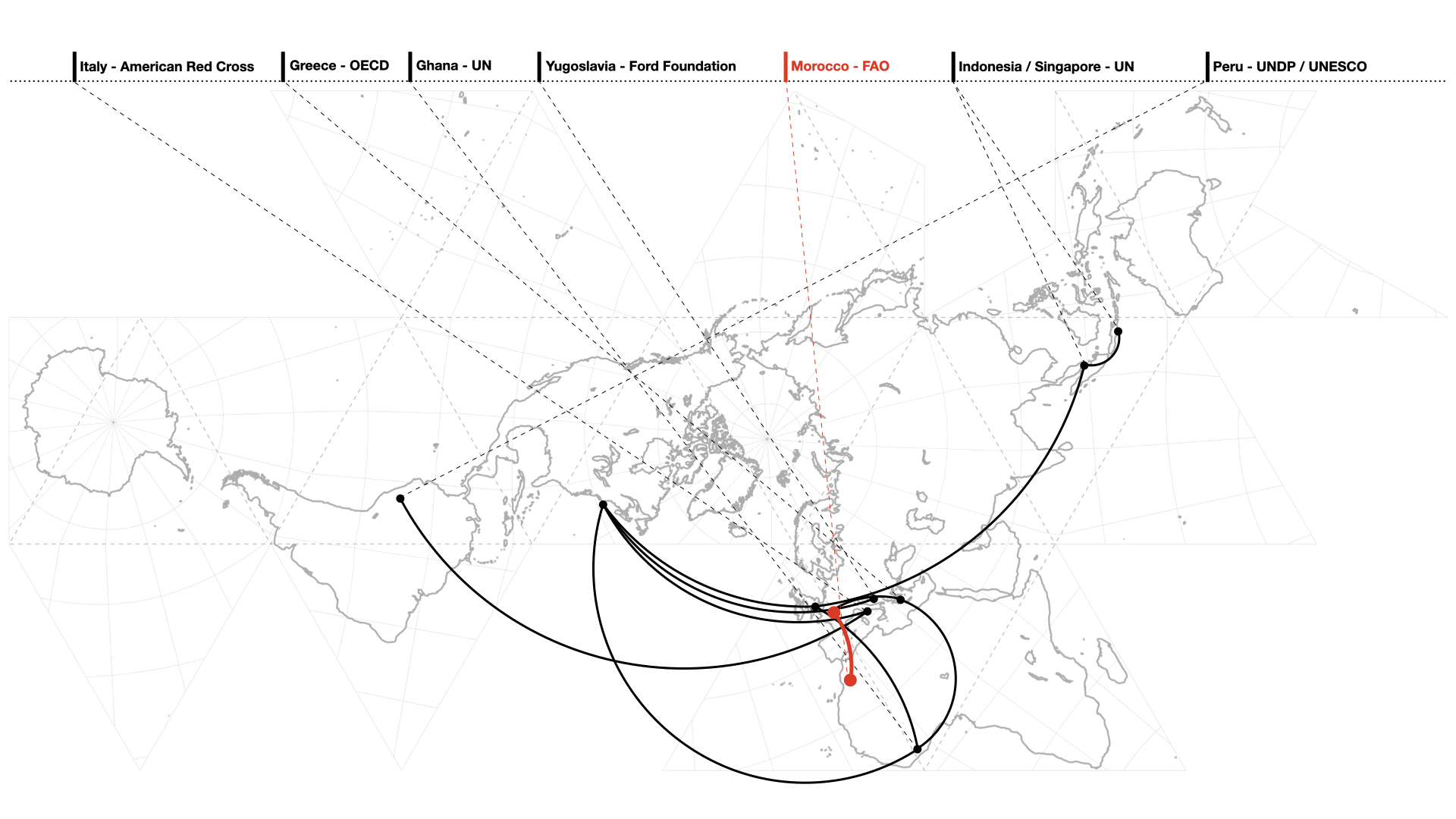Foreign aid for rural development: village design and planning in post-independence Morocco
Michele Tenzon, Axel Fisher

Abstract
DDuring the late colonial era and after independence, international organizations engaged in donating foreign aid to Morocco. The United Nations' technical assistance initiatives engaged in ambitious schemes targeting the rural realm. Among them, the Lalla Mimouna community development project (1957–1965), the Projet Sebou (1963–1980), and the Programme d'habitat rural (1967–1972). All three projects were concerned about the physical rural environment, which is assessed in this article on a common scale: the village. Given that they each focus on the geographical area of the Gharb plain, these projects offer a cross-section over the entanglements between their supporting international organizations' policies and the disciplinary expertise of village planning and design. After providing an overview of the development agendas of the aforementioned UN bodies, we discuss each of the case studies on the basis of unpublished archival material. Then, we discuss the overlaps in the UN bodies' development ideologies in relation to the ideologies inherited from the colonial era, and their selective appropriation by Moroccan polities. Finally, we argue that whereas planning practices were highly sensitive to the shifting paradigms of international aid organizations, village design remained relatively autonomous. This raises questions concerning the capacity of the disciplines of planning and development studies to carry out their emancipatory missions.
Michele Tenzon & Axel Fisher (2022) Foreign aid for rural development: village design and planning in post-independence Morocco, Planning Perspectives, 37:5, 949-971, DOI: 10.1080/02665433.2022.2116594
